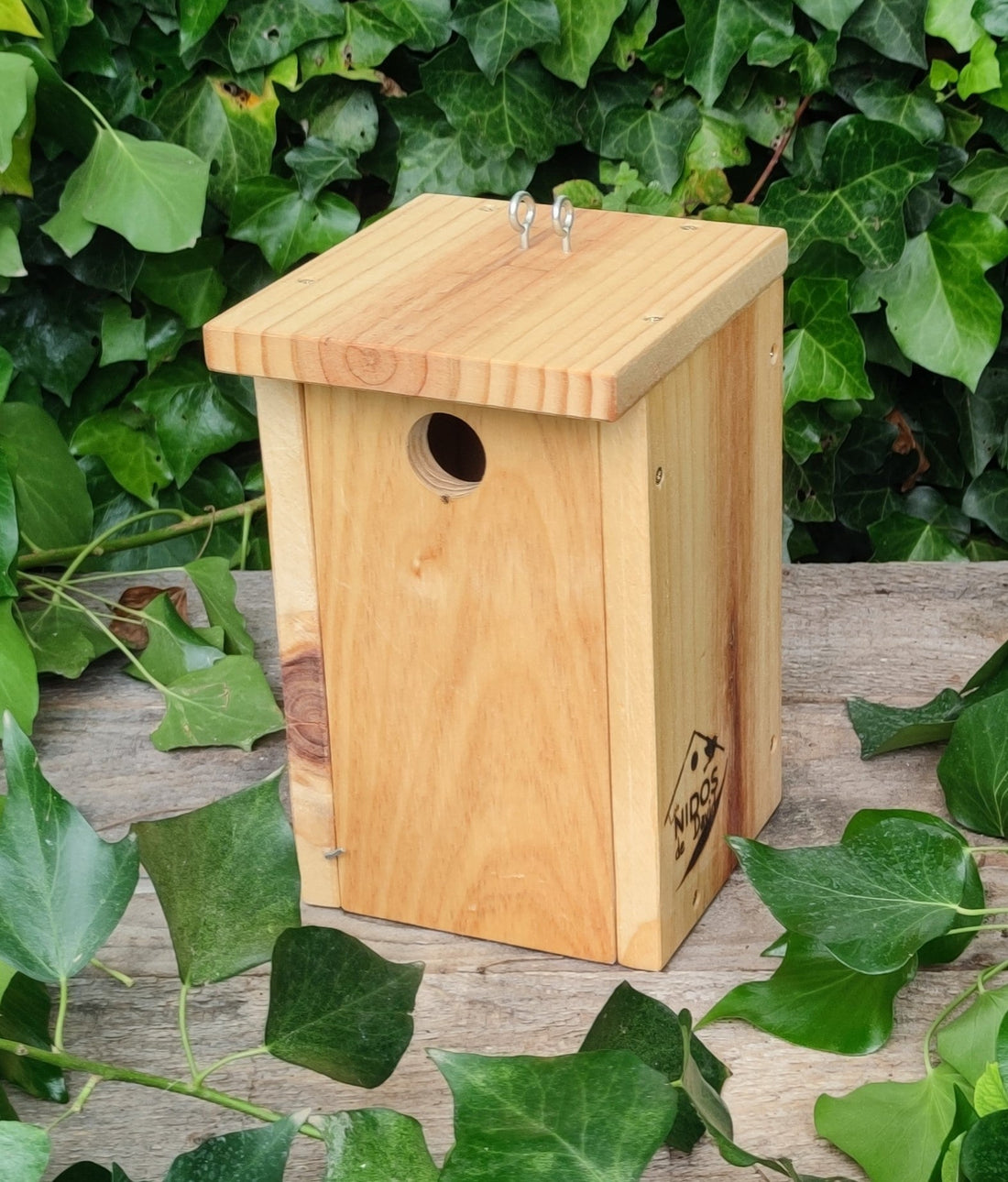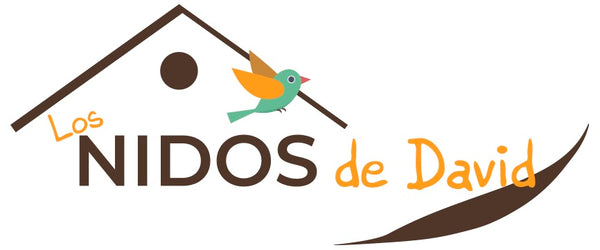
Characteristics of a good nest box
Share
Nest boxes are an excellent way to help wild birds find a safe place to nest, especially in areas where natural habitat has been reduced. Whether you have a garden, a balcony, or a terrace, installing a nest box can attract a wide variety of species. But not all nest boxes are created equal.
We often find nesting boxes in stores with a series of features that, while they may be striking or even advertised as effective and beneficial, are actually a checklist of what a nesting box should not be like:

- Painted or lacquered: Although non-toxic paints are available, many prefabricated nest boxes on the market may contain toxins, including lead. Another problem with colorfully painted houses, especially dark ones, is that they can create a "baking effect" inside if the nest box is placed in direct sunlight. On the other hand, birds can see colors, but it's not clear what message they convey. In nature, their nesting sites are primarily brown tree holes, not brightly colored human houses.
- Perches in the entry hole: Perches below the entrance hole allow predators to enter, giving them a foothold and easier access to the inside.
- Generic entry holes: Nest box entrances should be designed to allow certain birds in and keep others out. Entrance holes that are too large allow predators to enter, or, conversely, entrance holes that are too small can cause the bird to become trapped inside or damage its feathers. Entrance holes should be appropriately sized and well sanded.
- Nesting boxes made with bricks milk, juice bottles or corrugated cardboard: The idea of making nest boxes from recycled materials sounds great, but many of these materials, commonly used in workshops with children, are flimsy, become easy targets for birds, become saturated quickly with rain, or are more prone to overheating. Clearly, they don't provide a safe refuge for birds.
After all this, you're probably wondering, "So, what should a nest box be like?" Below, we'll explain what characteristics a good nest box should have to be effective and safe .
- Suitable and resistant materials: A good nest box should be made of natural wood. Wood remains the best material for nest boxes: it keeps birds insulated from extreme heat and cold, and is the most similar "substitute" for the cavities in which they would naturally nest in trees. The wood should be at least 15 mm thick, although ideally 18-20 mm.
- Good drainage and adequate ventilation: It's essential that the box have small holes in the bottom to drain any rainwater that may enter. It should also have ventilation slots at the top to prevent moisture buildup and maintain a suitable temperature inside the nest.
- Easy access for cleaning: Nest boxes should be able to be opened (front or side door) for cleaning once a year, after the breeding season. This prevents the proliferation of parasites and keeps the nest clean for future use.
We could go into much more detail about the characteristics of a good nest box, but these are the most important.
A well-designed and constructed nest box can make a difference for many bird species, helping them find a safe place to raise their chicks.
In our store you will find a wide variety of nest boxes for different species of birds and some mammals, such as bats.
We hope you enjoyed this post and found it useful. Thanks for reading!
